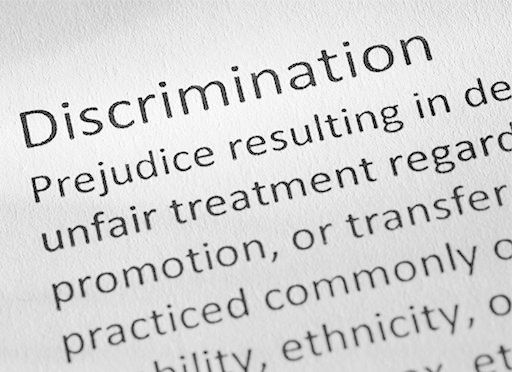New York Times Wall Street correspondent Emily Flitter details the racism and racial discrimination, past and present, in America’s banking and financial systems.

Black and Green
America’s racial wealth gap remains a yawning chasm, with racism deeply embedded within the US financial sector, New York Times Wall Street correspondent Emily Flitter writes in this broad and compelling narrative.
Racial Wealth Gap
Structural racism is a persistent feature of the US financial industry, and it manifests in how banks, stockbrokers, and insurers treat their employees and consumers.
The consequences of ignoring the racial wealth gap are widespread and dire.Emily Flitter
Black bank customers often endure unfair scrutiny. In 2018, Clarice Middleton of Atlanta tried to cash a $200 check at a Wells Fargo branch. Middleton’s landlord had issued the check, and Middleton had two forms of identification. She had worked as a bank teller and thus knew the process. Wells Fargo employees insisted the check was fraudulent and called the police. After an officer arrived and spoke to bank employees, they cashed the check. Middleton sued, and Wells Fargo entered into a confidential settlement.
Sauntore Thomas attempted to deposit three checks totaling $100,000, his proceeds from a race discrimination case against his former employer. TCF bank first insisted that the checks were forged, then quickly settled and issued a public apology.
The phenomenon of mistrust and poor treatment of Black customers knows no financial bounds.Emily Flitter
Ricardo Peters was a rising star in JPMorgan Chase’s retail operation. Peters started as a customer service representative at a call center answering calls from Chase credit card holders. He moved to Phoenix to work in the bank’s retail operation as a financial adviser. Peters set his sights on promotion to the Private Client group, a division that offered favorable rates and other perks to customers with $250,000 or more in deposits. But Peters didn’t know that other Black Chase employees had encountered a glass ceiling there. They believed they weren’t promoted to the Private Client group due to their race. These aggrieved bankers hired a high-powered attorney.
Peters knew nothing of Black employees’ claims that they had been shifted to less desirable branches in poorer neighborhoods because of their race. He assumed his hard work would pay off. But two white managers repeatedly blocked Peters’ requests for promotion. At one point, he was moved into a windowless office at the back of a branch, while a junior adviser got a more desirable office. Peters signed up a client who had received $372,000 in a settlement. That amount would more than qualify her as a private client, but Peters’s white boss disqualified her because of her race. Peters began recording conversations and filed a discrimination complaint with Chase Human Resources. JPMorgan twisted the facts of Peters’s complaint, and so he went to The New York Times with his story. Eventually, JPMorgan entered into a confidential settlement with Peters.
Insurance Carriers
The insurance industry charges Black policyholders more for coverage of their cars and homes than it charges white customers, and it discriminates further when Black people file claims. For example, burglars struck Lisa Thompson’s home in Toledo, Ohio, taking roofing material and her water heater. When Thompson filed a claim with Allstate, the adjuster seemed to think Thompson had orchestrated the theft. The company deposed her for four hours and ultimately denied her claim, but didn’t inform her of the denial until months later.
AI
The financial industry’s embrace of AI could automate decisions about what financial services to offer to whom, and at what price. AI-based lending decisions could remove human bias from loan approvals. But how can developers reprogram AI to adjust for inherent bias in the US economy?
For instance, credit scores derive from a consumer’s payment history. But Black consumers have had less opportunity to participate in the mainstream economy and thus build their credit scores. Court judgments can affect lending decisions and, in that realm, Black Americans have never received fair treatment. Credit scoring models and other measures of creditworthiness manifest anti-Black bias by reflecting past inequities that led to today’s consumer credit histories. Corporate America offers little hope that it will design financial algorithms that will account for the United States’ fraught racial history.
Reparations
How might reparations work? One possibility is that the United States might follow the German model, in which German companies admitted to playing a part in the Holocaust. American activists have sued US companies for the harms Black Americans suffered, which include shorter lifespans and higher infant mortality rates.
Some companies have disclosed historical links to enslavement. Wells Fargo, for example, purchased Wachovia, and two companies folded into Wachovia — the Bank of Charleston and the Georgia Railroad and Banking Co. — had enslaved people during the 19th century. Wells Fargo and Wachovia have acknowledged this history. Those advocating for reparations believe Congress should enact reimbursement programs because the federal government is ultimately the responsible party.
Repair Racial Inequality
From 2015 to 2020, the National Community Reinvestment Coalition negotiated $210 billion in community investment promises. JPMorgan promised $30 billion to originate 40,000 mortgages for Black and Latino borrowers, and it pledged small-business loans and loans to affordable housing developers.
There is a well-documented tradition of bankers and government officials blaming conditions they have created themselves on the hapless victims of racism.Emily Flitter
JPMorgan’s $30 billion pledge turned out to be only a recharacterization of assets it would have deployed anyway: Fully $28 billion of its $30 billion pledge would have been lent under usual business practices. Roughly $1.25 billion represented philanthropy for nonprofits and community institutions.
Cool Outrage
Emily Flitter writes with precision and clarity. She keeps her emotions mostly out of her prose, but you may have a hard time reading her dispassionate words and not experiencing a slow burning rage. By the time you reach the end of Flitter’s saga of detailed reporting — with all its evocative, illustrative examples — you may marvel that Flitter kept her cool throughout. But there is a difference between outrage and rage, and Flitter makes no secret of her feelings of the former. Flitter sees a vast system arrayed against Americans of color, and she sees no way in which it might change any time soon.








